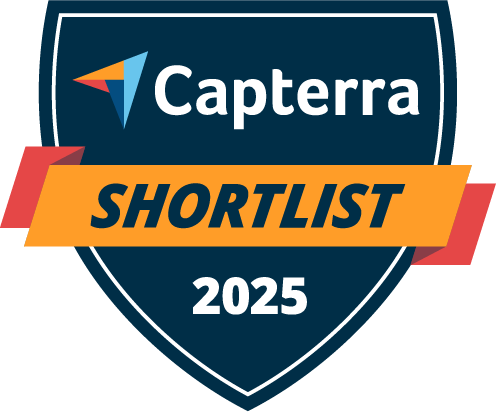School audits play a crucial role in ensuring the smooth operation and financial accountability of educational institutions. These evaluations are designed to monitor that schools are complying with regulations, maintaining proper documentation, and providing a safe and effective learning environment for students.
However, facing an impending audit can cause anxiety and stress for school administrators. But fret not! With the right preparation, you can ensure that the school audit process runs smoothly and efficiently. This comprehensive guide will explain what a school audit is, how it works, and a detailed checklist to prepare for one.
Make school audits stress-free with smarter asset tracking.
What is a school audit?
A school audit is a comprehensive evaluation process aimed at scrutinizing an educational institution’s financial records, policies, and compliance with relevant regulations. The primary goal is to provide assurance to stakeholders, including students, parents, faculty, and governing bodies, regarding the institution’s financial integrity and governance.
These audits may be conducted by internal auditors within the school, external auditors hired by the institution, or government agencies responsible for overseeing education. The scope of a school audit typically includes reviewing financial statements, internal controls, procurement processes, payroll management, strategic asset management (including IT equipment management systems) and adherence to legal and regulatory requirements.
School audits help identify areas for improvement, strengthen financial management practices, and provide assurance to stakeholders regarding the school’s operations and integrity.
Types of school audit
There are four main types of school audits:
1. Financial audit
This type of audit dives deep into the school’s financial records. Auditors meticulously examine budgets, bank statements, payroll records, and other financial documents. Their objective is to verify the accuracy of the school’s financial statements, ensure proper accounting practices, and identify any instances of mismanagement or misuse of funds.
2. Performance audit
This audit goes beyond finances and evaluates the effectiveness and efficiency of the school’s programs and operations. Auditors might analyze student achievement data, review curriculum implementation, assess resource allocation, or examine instructional practices. Their goal is to identify areas where the school can improve its educational delivery and ensure programs are aligned with established learning objectives.
3. Compliance audit
Compliance audit focuses on verifying if the school adheres to specific regulations and guidelines set forth by governing bodies. Auditors might review documents like special education plans, Title IX documentation, health and safety policies, or student discipline records. The aim is to ensure the school complies with all relevant regulations and operates within the legal framework established for educational institutions.
An institution that expends less than $750,000 in federal funds is exempt from annual compliance audits, according to FSA (Federal Student Aid).
4. Investigative audit
An investigative audit is a targeted examination initiated in response to a suspected irregularity or allegation of financial misconduct within a school. Unlike the proactive nature of financial, performance, and compliance audits, investigative audits are typically reactive. They are triggered by a specific concern or suspicion of wrongdoing, such as
- Missing funds
- Discrepancies in financial records
- Allegations of fraud or embezzlement
- Suspected misuse of school resources

Why being prepared for a school audit matters
School audits are a vital part of ensuring a school’s operational efficiency and financial accountability. Here’s why a proactive approach to school audit readiness offers a strategic advantage:
1. Compliance with educational regulations
Educational institutions operate within a complex framework of regulations set by governing bodies. These regulations cover diverse areas like curriculum standards, student privacy, special education requirements, and health and safety protocols.
A well-prepared audit demonstrates adherence to these regulations, mitigating the risk of legal repercussions and potential fines for non-compliance. This translates to cost savings and a focus on core educational objectives, rather than managing legal issues.
2. Accurate financial reporting and management
Financial audits provide transparency into a school’s financial health. By being prepared, schools can showcase accurate and transparent financial reporting. This cultivates trust and confidence with stakeholders, including parents, governing bodies, and potential donors. Strong stakeholder confidence can lead to increased support for the school’s mission and potentially open doors to additional funding opportunities.
3. Mitigating risks and minimizing errors
Audits serve as a critical risk management tool, helping schools identify potential vulnerabilities, errors, or areas of non-compliance before they escalate into more significant issues.
By thoroughly preparing for an audit, schools can efficiently use funds, mitigating risks and minimizing the likelihood of costly mistakes or oversights. This proactive approach not only safeguards the school’s reputation but also protects the interests of students, staff, and other stakeholders.
4. Building trust and confidence with stakeholders
School audits play a crucial role in cultivating trust and confidence among various stakeholders, including parents, community members, and education authorities. When a school demonstrates a high level of preparedness and transparency during an audit, it sends a strong message about its commitment to accountability, ethical practices, and the effective use of resources.
This, in turn, strengthens the school’s reputation and credibility, enhancing stakeholder confidence in the institution’s ability to provide a high-quality educational experience.
5. Continuous improvement and best practices
Audits are not merely about identifying problems or areas of non-compliance; they also serve as valuable tools for continuous improvement and the adoption of best practices. By carefully preparing for an audit and actively engaging in the process, schools can gain insights into their strengths and weaknesses, allowing them to develop strategies for enhancing their operations, programs, and overall effectiveness. Embracing the audit as an opportunity for growth and learning can help schools stay current with industry standards and implement innovative approaches to better serve their students.

Stay compliant, stay organized—simplify your next audit.
Preparing for your school audit: A complete checklist
School audits can feel overwhelming, but with proper preparation, you can go through the process smoothly and confidently. This comprehensive school audit checklist outlines the key steps for pre-audit preparation, actions during the audit itself, and essential post-audit follow-up measures.
Pre-audit preparation
A successful audit starts long before the auditors arrive. By taking proactive steps in the pre-audit phase, you can ensure your school is organized, efficient, and prepared to demonstrate its commitment to responsible management. Here’s what you need to do:
- Understand the audit scope: Before diving into the preparation process, it’s crucial to comprehend the audit’s scope and objectives. Review the audit notification or communicate with the auditing agency to understand the specific areas they will evaluate, the timeframe, and any particular areas of focus. This knowledge will help you prioritize your preparation efforts and allocate resources effectively.
- Gather documentation: Documentation is the backbone of any audit. Begin by creating a comprehensive inventory of all the documents and records that may be requested during the audit process. This includes academic records, financial statements, policy manuals, staff credentials, safety protocols, and more. Ensure that all documents are up-to-date, complete, and organized in a logical manner for easy access during the audit.
- Internal review: Conducting an internal review or self-assessment before the actual audit can be highly beneficial. Assign a team to evaluate the school’s operations, policies, and procedures against the audit criteria. This exercise can help identify potential areas of concern or non-compliance, allowing you to address them proactively before the audit takes place.
Steps during the audit
The auditors have arrived! Here’s how to ensure a smooth and collaborative audit experience:
- Assign a focal person: Designate a specific individual or team to serve as the primary liaison between the school and the auditors. This focal person or team should be knowledgeable about the school’s operations, policies, and documentation. They will be responsible for coordinating the audit process, facilitating interviews, providing requested information, and addressing any concerns or questions raised by the auditors.
- Provide access to information: During the audit, auditors may request access to various documents, records, facilities, or personnel. It’s essential to cooperate fully and provide the requested information promptly. Establish clear communication channels and ensure that all relevant staff members are aware of the audit and prepared to assist when needed.
- Record keeping: Maintain detailed records throughout the audit process. Document all interactions with the auditors, requests for information, and any significant findings or discussions. These records can be invaluable for future reference, follow-up actions, or potential appeals if necessary.
Post-audit actions
Once the audit is complete, the work doesn’t stop there. Here’s how to leverage the audit findings for continuous improvement:
- Reviewing the audit report: Once the audit is complete, the auditors will provide a comprehensive report detailing their findings, recommendations, and any areas of non-compliance or concern. Carefully review the report, paying close attention to the specific issues raised and the supporting evidence provided.
- Developing a response plan: Based on the audit report, develop a comprehensive response plan to address any identified deficiencies or areas for improvement. This plan should include specific actions, timelines, and assigned responsibilities to ensure that all necessary corrective measures are taken in a timely and effective manner.
- Continuous improvement: Embrace the audit process as an opportunity for continuous improvement. Analyze the findings and recommendations to identify areas where your school can enhance its policies, procedures, and overall operations. Implement changes based on best practices and industry standards, and establish a system for ongoing monitoring and evaluation to ensure sustained improvement.
Seamless audits with asset management tools
Preparing for a school audit can be a daunting task, but with the right tools and processes in place, it can be a much smoother and more manageable experience.
EZO, a leading asset management software solution, is designed to help schools manage and streamline their school audit process. With EZO, schools can maintain a centralized database of all assets and their associated information, making it easy to keep track of every asset’s location, status, and maintenance history.
With an asset tracking tool, institutions can maintain a comprehensive audit trail that tracks all inventory movements and user activities, letting you mark school technology audit checklists off. This detailed record-keeping provides auditors with a clear picture of how education assets are being managed. Additionally, customized reports can be easily exported and shared with auditors, saving time and effort.









